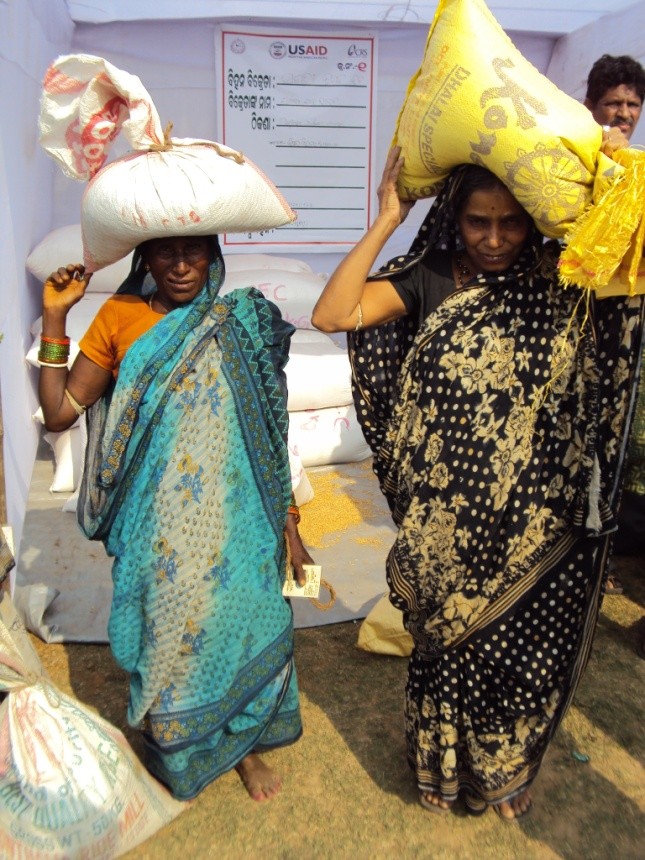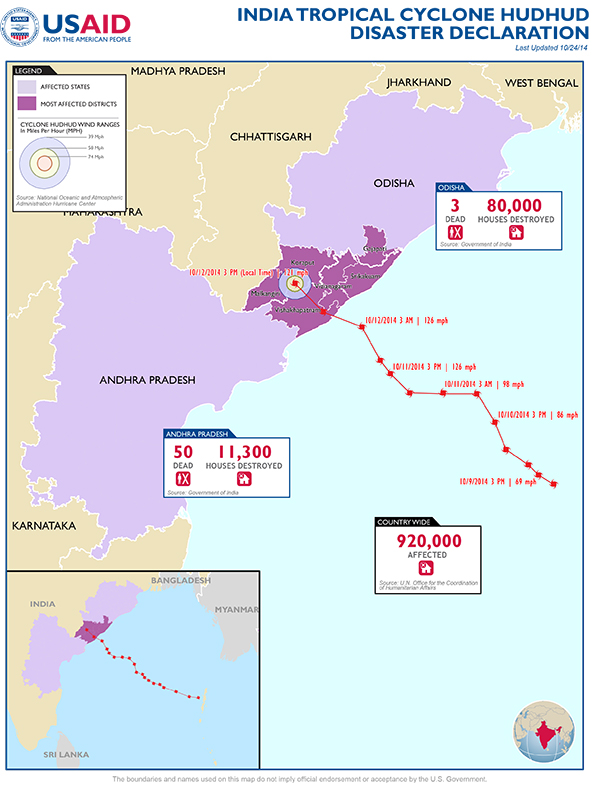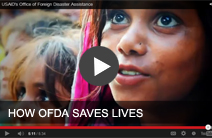- What We Do
- Agriculture and Food Security
- Democracy, Human Rights and Governance
- Economic Growth and Trade
- Education
- Ending Extreme Poverty
- Environment and Global Climate Change
- Gender Equality and Women's Empowerment
- Global Health
- Water and Sanitation
- Working in Crises and Conflict
- Disaster Assistance
- Political Transition Initiatives
- Conflict Mitigation and Prevention
- Countering Violent Extremism
- Disaster Risk Reduction
- Peacebuilding and Reconciliation
- Providing Safe & Secure Environments for Development
- Recovering From Crisis
- Resilience
- Tech Challenge for Atrocity Prevention
- World Humanitarian Day
- U.S. Global Development Lab

Latest India Map
India Tropical Cyclone Map - 10-24-2014 ![]() (pdf - 899k)
(pdf - 899k)
Key Developments
On October 12, 2014, Tropical Cyclone Hudhud made landfall on India's coastal Andhra Pradesh State, near the city of Visakhapatnam, triggering flooding and landslides and causing at least 53 deaths and significant damage to houses, infrastructure, and livelihoods of vulnerable populations in Andhra Pradesh and Odisha states, according to Government of India (GoI) and local media. The cyclone and floods damaged or destroyed more than 91,000 houses and affected approximately 920,000 people. The GoI led preparedness efforts and the post-cyclone response, evacuating more than 400,000 people in advance of the cyclone and deploying teams to conduct search and rescue operations and clear debris. The GoI provided assistance, including food, access to safe drinking water, and shelter. Non-governmental organizations (NGOs) and donor organizations coordinated to determine humanitarian needs and distribute relief supplies. NGOs identified an immediate need for emergency relief items, including blankets, hygiene kits, mosquito nets, shelter supplies, and water treatment kits.
On October 24, 2014, U.S. Chargé d’Affaires Kathleen Stephens declared a disaster due to the effects of Tropical Cyclone Hudhud. In response, USAID’s Office of U.S. Foreign Disaster Assistance (USAID/OFDA) provided $100,000 through USAID/India to Plan International to distribute emergency relief items. USAID/OFDA staff in Bangkok, Thailand, and Washington, D.C., assessed conditions in coordination with USAID/India, the U.S. Embassy in New Delhi, the GoI, and humanitarian partners.
Background
India is one of the world’s most hazard-prone countries, regularly experiencing cyclones, drought, earthquakes, tsunamis, floods, and landslides. These hazards threaten millions of lives and can cause large-scale financial, infrastructure, and agricultural losses. Recent major disasters include the Indian Ocean tsunami in December 2004 and the South Asia earthquake in October 2005. USAID/OFDA supports a number of regional and country-specific disaster risk reduction activities in India, including support for improving climate risk management in urban areas and building local disaster response capacity.









Comment
Make a general inquiry or suggest an improvement.